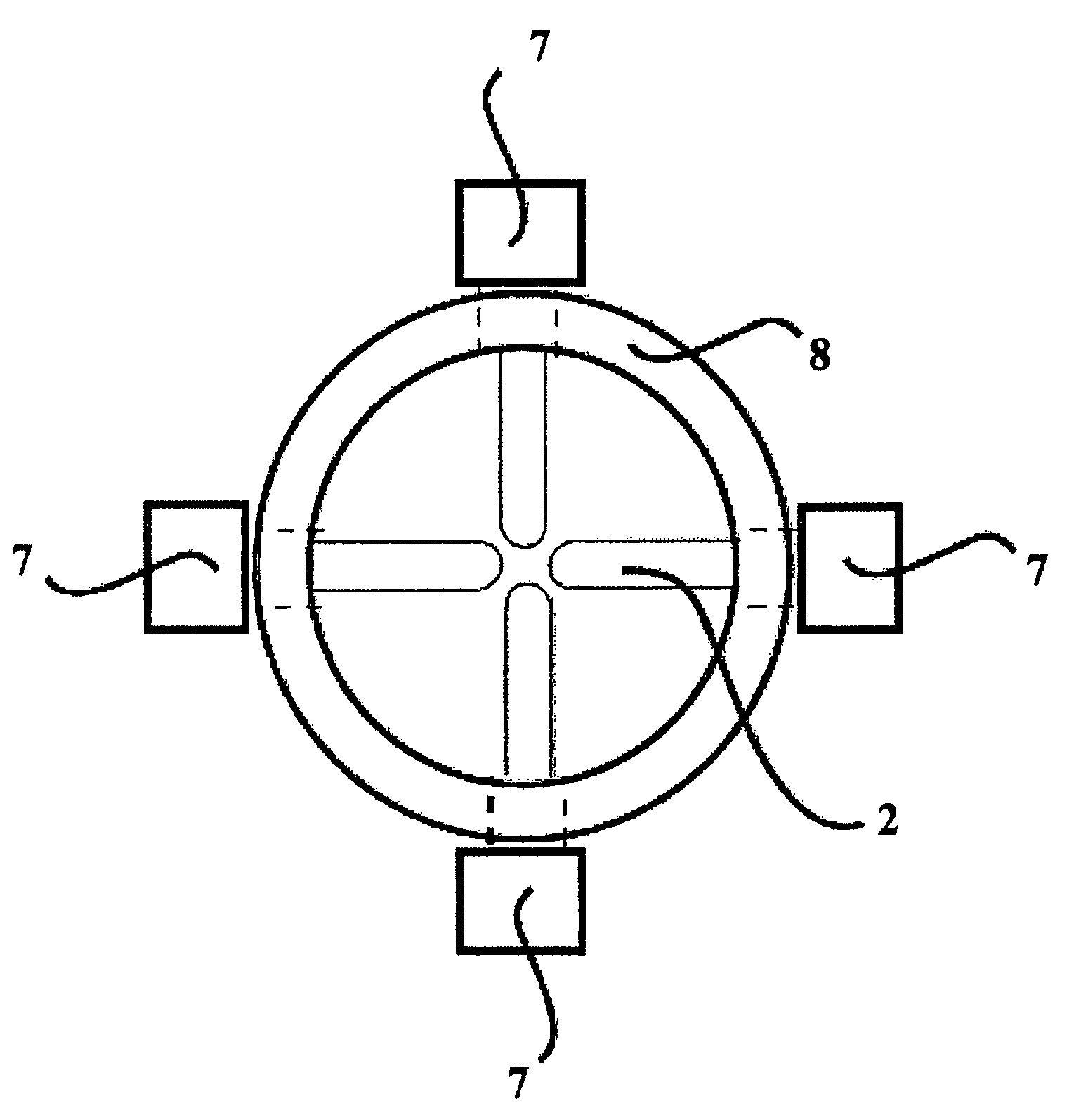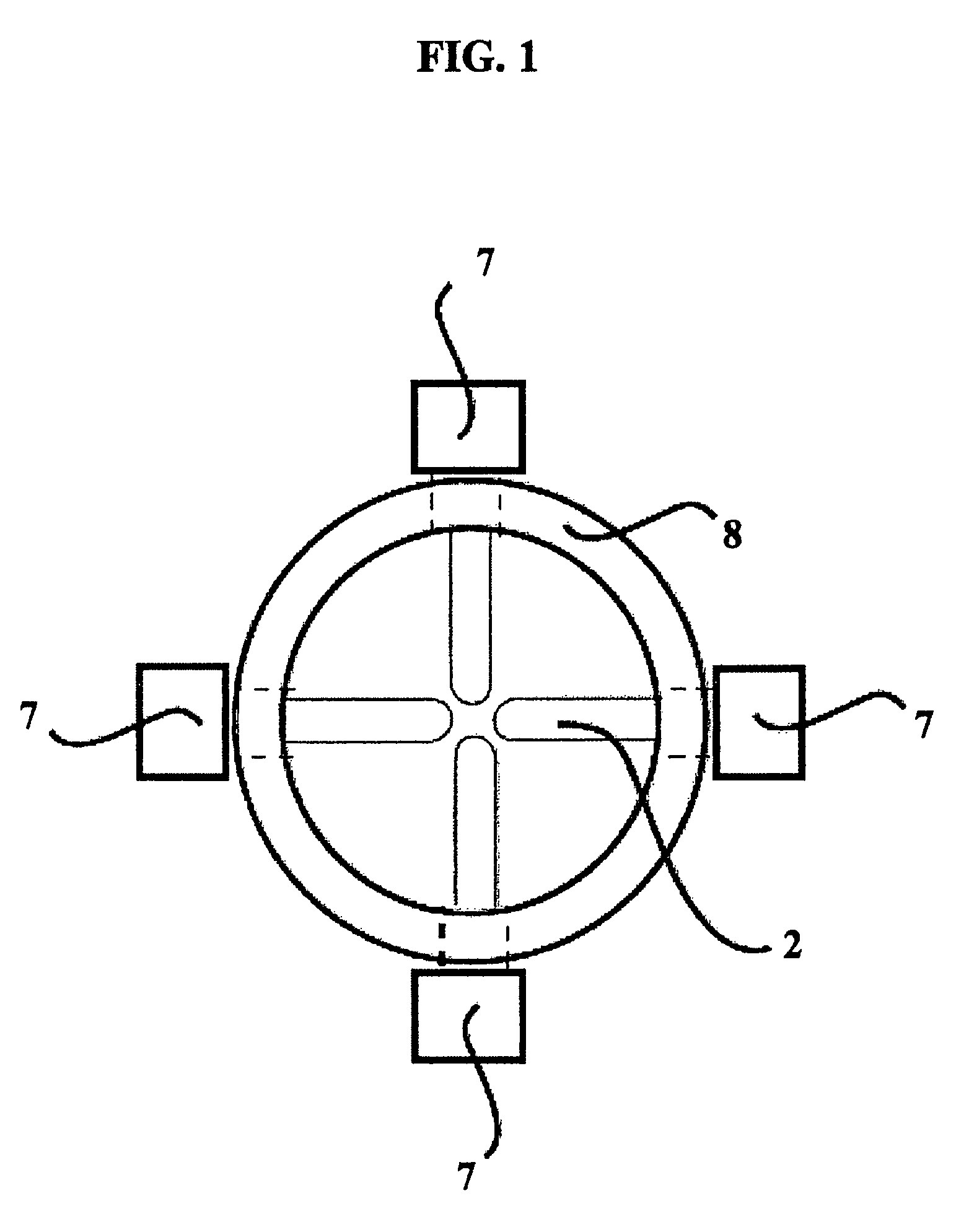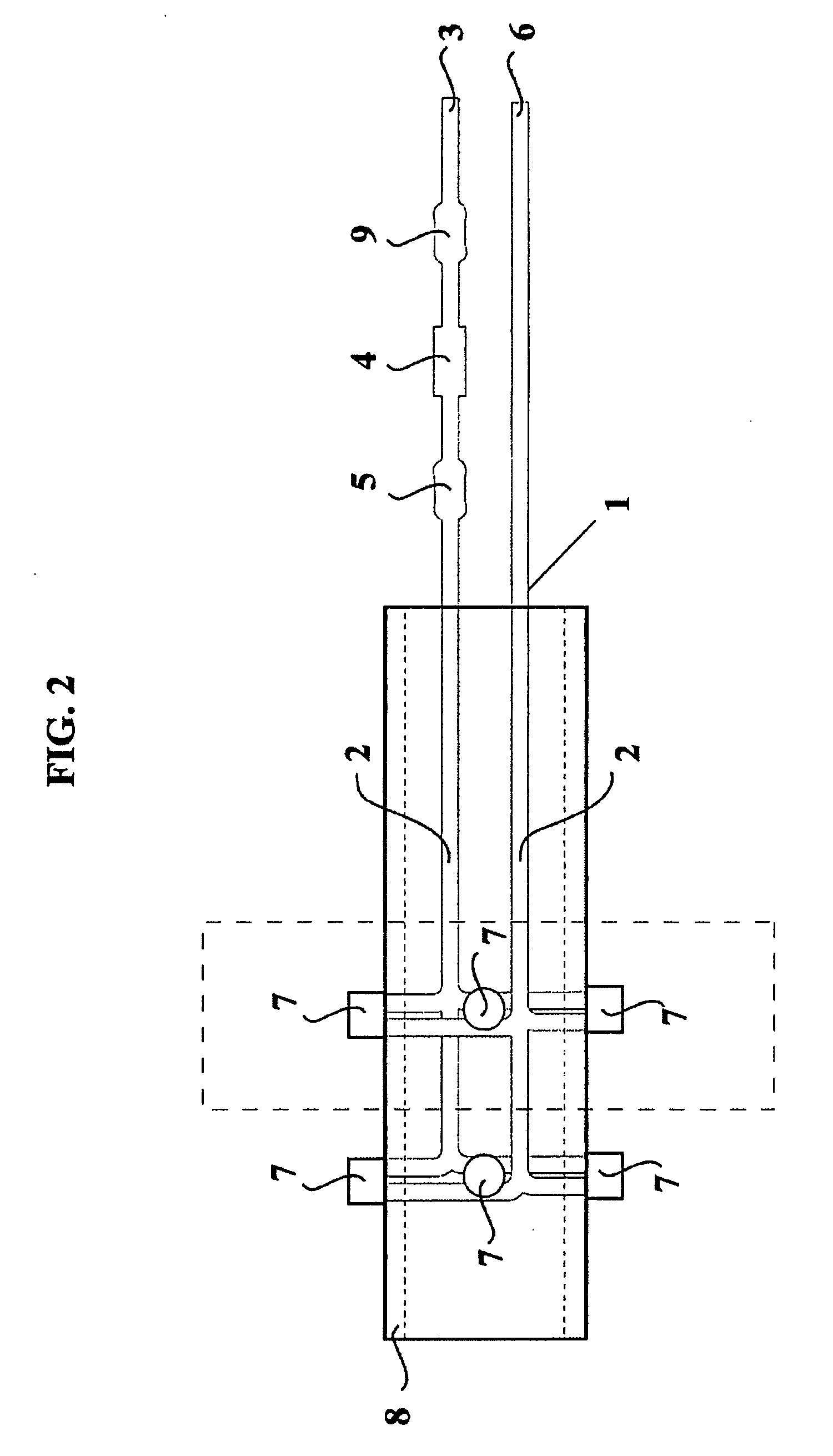Methods and compositions for improved light traps
a technology of light traps and compositions, applied in the field of methods and compositions for improving light traps, can solve the problems of reducing the efficiency of light traps, and reducing so as to reduce the number of traps and reduce the effect of effective capture of arthropods in irregular shape areas
- Summary
- Abstract
- Description
- Claims
- Application Information
AI Technical Summary
Benefits of technology
Problems solved by technology
Method used
Image
Examples
example 1
Basic Lighting Systems
[0076]A lighting system was made to replace existing incandescent bulbs in Center for Disease Control (CDC) light traps for disease and insect surveillance. The system was made using from four Toyoda-Gosei UV LEDs wired in parallel with 30 ohm resistors to regulate the current in an electrical circuit and attached to a supporting member, UV resistant tubing.
[0077]The LEDs face the four cardinal points and are held in place by UV resistant tubing. The tubing allows the four LEDs to be removed and replaced as a whole by changing the entire unit or lighting platform. The tubing and individual resistors allows for additional wavelengths or LEDs to simply be added to the existing tubing or alternative units can be used. Additionally, the LEDs are protected by an added 6 volt Zener diode placed within the electrical circuit and a 200 mA fuse to protect the other electronics in the trap.
example 2
Maximizing Brightness to Attract Terrestrial Pests to an Irregularly Shaped Area
[0078]Grain beetles have a photopigment with maximum stimulation between 350-370 nm. A decagonal lighting system is designed that contains five 350 nm LEDs with a viewing angle of 60 degrees and five 370 nm LEDs with a viewing angle of 30 degrees. The LEDs are alternated within the ten slots, one on each side of the polygon. The 350 nm light, therefore, illuminates a conical area completely surrounding the trap but only projects a few meters (<20 m) while the narrower angled 370 nm bulbs project a greater distance (at least 50 m) to attract beetles. The combination of lights, frequencies, and angles maximizes the capture area, attraction of the beetles of interest, and the brightness of the trap. The terrestrial beetles that inhabit grain silos will be attracted to the lights and be removed from the grain preventing spoilage and insect damage.
[0079]Optionally, additional lighting platforms may be added t...
example 3
A Cylindrical Replacement Lighting System
[0080]Sand flies are known to be attracted to flowers for sugar meals. Four ultraviolet 370 nm LEDs with a 90 degree viewing angle can be combined with six blue / green 500 nm LEDs with viewing angles of 60 degrees. This pattern simulates flowers on plants and is much brighter than natural flowers to the insect's photo-pigments, and therefore, appears as a giant flower.
[0081]Using a cylindrical supporting member to support a lighting platform yields a structure that is similar in shape to a conventional incandescent or fluorescent tube light. The cylindrical nature of the lighting system allows it to fit within the incandescent light mount on CDC-light traps or similar conventional traps and replace the incandescent or fluorescent light. The lighting system essentially acts as a replacement bulb and is inserted into the trap in a similar manner.
PUM
 Login to View More
Login to View More Abstract
Description
Claims
Application Information
 Login to View More
Login to View More - R&D
- Intellectual Property
- Life Sciences
- Materials
- Tech Scout
- Unparalleled Data Quality
- Higher Quality Content
- 60% Fewer Hallucinations
Browse by: Latest US Patents, China's latest patents, Technical Efficacy Thesaurus, Application Domain, Technology Topic, Popular Technical Reports.
© 2025 PatSnap. All rights reserved.Legal|Privacy policy|Modern Slavery Act Transparency Statement|Sitemap|About US| Contact US: help@patsnap.com



